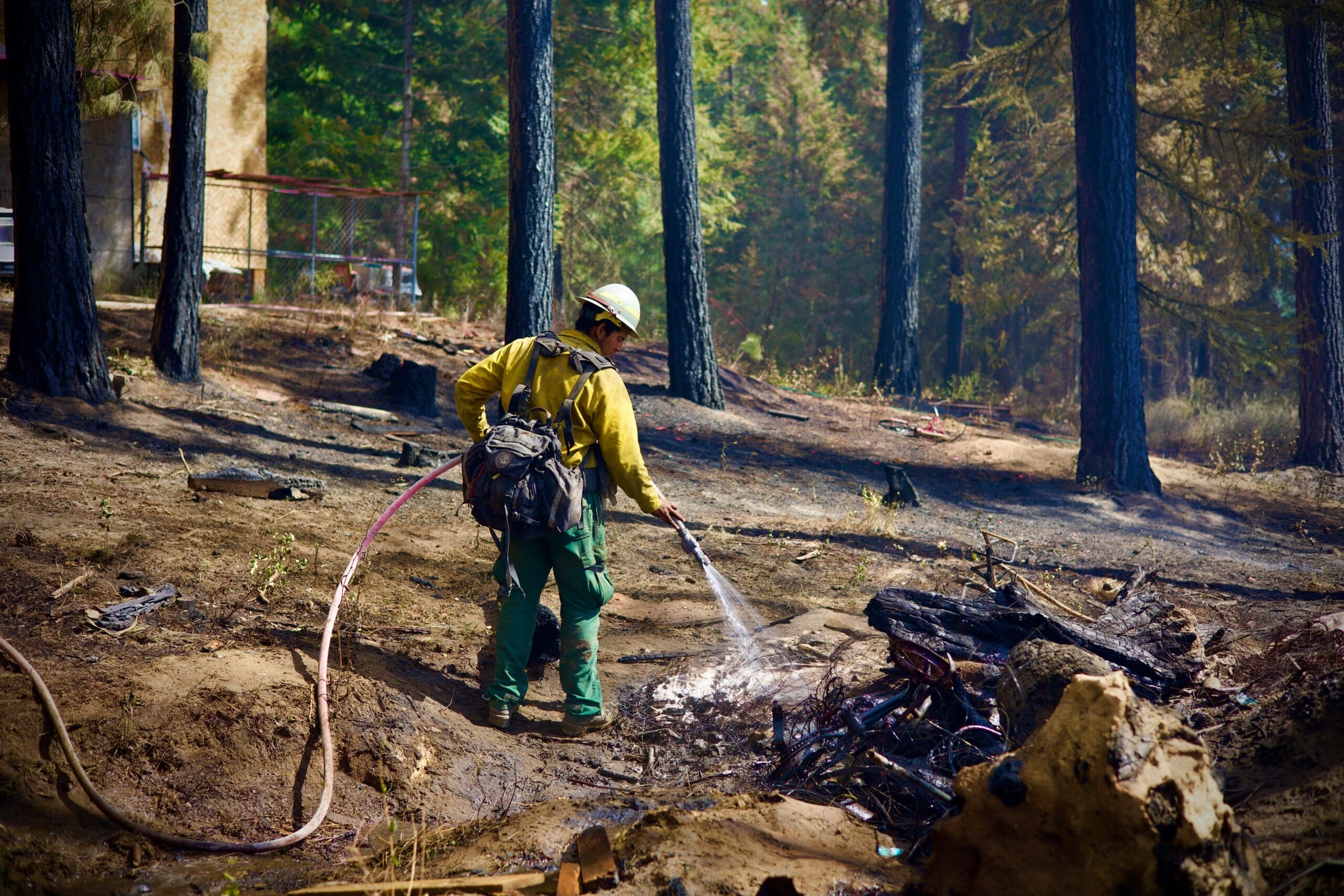


The Rising Need for Legal Action After California’s Devastating Wildfires
California’s landscape is increasingly scarred by wildfires, and a significant number of these devastating events are linked to the negligence of utility companies. When power lines fail and homes are lost, families face a long and difficult road to recovery. A California Wildfire Lawsuit can be a crucial step toward securing the compensation needed to rebuild.
Here’s what you need to know about California wildfire lawsuits:
- Who can sue: Property owners, renters, business owners, and families who suffered losses due to utility-caused fires.
- Main defendants: Pacific Gas & Electric (PG&E), Southern California Edison (SCE), and San Diego Gas & Electric (SDG&E).
- Types of compensation: Property damage, wrongful death, personal injury, evacuation costs, lost wages, and emotional distress.
- Legal basis: Inverse condemnation, negligence, and violation of safety codes.
- No upfront costs: Most wildfire lawyers work on a contingency fee basis, meaning you pay nothing unless you win.
The numbers are staggering. Utility equipment has caused less than 10% of California’s wildfires but nearly half of its most destructive fires. The 2018 Camp Fire, for example, killed 85 people and destroyed nearly 14,000 homes, leading to a historic $13.5 billion settlement from PG&E.
With over 1.2 million California homes at high risk of wildfires, understanding your legal rights is more important than ever. California’s unique legal doctrine of inverse condemnation holds utilities strictly liable for fire damage caused by their equipment, even without proving negligence. This means if a utility’s power line starts a fire that damages your property, the company is responsible for your losses.
I’m Mason Arnao, and through my work with legal data management systems, I’ve seen the profound impact these cases have on families. My experience has shown me the critical importance of having the right information and legal representation when facing such a challenging situation.
Who Is Liable for Wildfire Damages and How Is It Proven?
When a wildfire devastates a community, determining the cause is the first step toward accountability. Investigations by agencies like CAL FIRE often reveal that faulty power lines or other utility equipment are to blame. While utility equipment causes less than 10% of all wildfires, it’s responsible for nearly half of California’s most destructive fires. This is often due to aging infrastructure and a failure to clear vegetation around power lines, creating a tinderbox in California’s dry climate.
Key Legal Grounds for a Lawsuit
Victims of wildfires caused by utility negligence have several legal avenues to seek compensation:
- Inverse Condemnation: This powerful legal doctrine is unique to California. It holds that if a utility’s equipment (a public improvement) damages private property, the utility is strictly liable for the damages. This means you don’t have to prove the company was negligent, only that its equipment caused the fire that harmed you.
- Negligence: This is a more common legal claim where you must prove the utility company failed to exercise reasonable care in maintaining its equipment or operations. Examples include not maintaining their equipment, failing to inspect power lines, or ignoring safety regulations. The California Civil Jury Instructions outline the standards for proving such negligence.
- Other Claims: Additional legal theories like nuisance (interfering with your property rights) and trespass (the fire unlawfully entering your property) can also apply. Furthermore, violations of specific state laws, such as the Public Utilities Code § 2106, can establish direct liability for damages.
The Primary Defendants in Wildfire Cases
Several major utility companies have been identified as responsible parties in numerous California wildfires:
- Pacific Gas & Electric (PG&E): PG&E’s equipment has been linked to some of the most catastrophic fires in state history, including the Camp Fire and the Dixie Fire.
- Southern California Edison (SCE): SCE has faced lawsuits for its role in major Southern California fires, such as the Thomas Fire and the Woolsey Fire.
- San Diego Gas & Electric (SDG&E): SDG&E has also been held responsible for fires in its service area, including the 2007 Witch and Guejito fires.
In some cases, third-party contractors who performed maintenance for these utilities may also be held liable.
Major Wildfires and Landmark Legal Actions
California’s history is marked by devastating wildfires that have led to significant legal battles, shaping how utility companies are held accountable.
The Camp Fire (2018): A Turning Point
The 2018 Camp Fire was a tragic turning point. It destroyed the town of Paradise, killed 85 people, and burned over 18,000 structures. The cause was traced to faulty PG&E equipment, leading to a massive California Wildfire Lawsuit. The financial fallout was so severe that PG&E filed for bankruptcy and ultimately pleaded guilty to 84 counts of involuntary manslaughter. A historic $13.5 billion settlement was established for victims through the Fire Victim Trust, setting a powerful precedent for utility accountability. You can find more details on the Camp Fire from CAL FIRE.
Other Significant Wildfires Fueling Lawsuits
- 2017 North Bay Fires: A series of fires in Napa and Sonoma counties, also linked to PG&E equipment, resulted in 22 deaths and the destruction of over 6,000 structures. These claims were included in the PG&E bankruptcy settlement.
- 2018 Woolsey Fire: This fire, allegedly caused by Southern California Edison (SCE) equipment, burned nearly 97,000 acres in Los Angeles and Ventura counties, destroying over 1,600 structures and forcing the evacuation of almost 300,000 people. SCE has since settled many of the claims.
- 2021 Dixie Fire: The second-largest wildfire in California’s history, the Dixie Fire burned nearly one million acres and was attributed to PG&E equipment. It destroyed the historic town of Greenville and led to ongoing litigation against the utility.
- 2022 McKinney Fire: This fire, which started in the Klamath National Forest, resulted in multiple fatalities and destroyed over 180 structures. Lawsuits have been filed against PacifiCorp, alleging its equipment was responsible for the ignition.
These cases highlight a pattern of utility-related fires and the legal battles that follow. For more information on specific incidents and legal options, you can explore resources like Tort Advisor’s wildfire lawsuit section.
What Compensation Can You Recover?
If your property was damaged or you suffered personal injury in a wildfire caused by a utility company, you may be entitled to significant compensation. A California Wildfire Lawsuit can help you recover costs that often go far beyond what insurance policies cover.
Types of Damages You Can Claim
Victims can seek compensation for a wide range of losses, including:
- Property Damage: The cost to repair or rebuild your home and other structures.
- Personal Property: The value of all belongings lost in the fire, from furniture to personal keepsakes.
- Additional Living Expenses (ALE): Costs for temporary housing, food, and other necessities while displaced.
- Lost Wages and Income: Compensation for lost earnings and diminished future earning capacity.
- Business Interruption Losses: For business owners, this covers lost profits and operational costs.
- Emotional Distress: Compensation for the psychological impact, including anxiety, depression, and PTSD.
- Personal Injury: For physical harm, such as burns or respiratory issues from smoke inhalation.
- Evacuation Costs: Reimbursement for expenses incurred during an evacuation.
The Legal Process: From Claim to Compensation
Navigating a wildfire lawsuit involves several key stages:
- Hiring an Attorney: The first step is to consult with an experienced wildfire lawyer. Most work on a contingency fee basis, meaning you don’t pay unless you win.
- Investigation and Filing: Your legal team will investigate the fire’s cause, gather evidence, and file a complaint in court. Your case may be an individual lawsuit or part of a larger mass tort action against the utility.
- Findy and Negotiation: Both sides exchange information and evidence. Your lawyer will then negotiate with the utility’s legal team to reach a fair settlement.
- Resolution: Most cases are resolved through a settlement. If not, the case may proceed to trial. The PG&E bankruptcy, which established a $13.5 billion Fire Victim Trust, is a prime example of how these cases can be resolved on a large scale.
The California Wildfire Fund and Its Impact
Following the devastating 2017 and 2018 wildfires and PG&E’s subsequent bankruptcy, California created a $21 billion Wildfire Fund. This fund acts as an insurance pool for major utility companies like PG&E, SCE, and SDG&E.
How it Works: The fund is financed by contributions from the utilities and a surcharge on customer electricity bills. Its purpose is to help utilities cover the massive costs of wildfire claims without going bankrupt, ensuring they can continue to operate and invest in safety upgrades. To access the fund, a utility must demonstrate that it has been operating its equipment prudently.
The Controversy: Critics argue that the fund unfairly places the financial burden on ratepayers, who are essentially paying for the utility’s potential negligence. There are also concerns that another series of catastrophic fires could deplete the fund, leaving future victims without a clear path to compensation. This situation is a key factor in California’s ongoing homeowner’s insurance crisis, as insurers become more reluctant to cover properties in high-risk areas.
For more details, you can review the CPUC’s reports on wildfire mitigation and costs.
How to Pursue a California Wildfire Lawsuit: A Step-by-Step Guide
If you’ve been affected by a wildfire, taking the right steps can be crucial for your financial recovery. Here’s a guide to help you steer the process.
Step 1: Ensure Safety and Document Everything
Your first priority is safety. Once you are out of harm’s way, begin documenting your losses, which is critical for both insurance claims and any potential legal action.
- Wait for Official Clearance: Do not return to your property until emergency officials have declared it safe.
- Photograph and Video Everything: Before touching anything, take extensive photos and videos of the damage to your home, property, and belongings.
- Create an Inventory: List all lost or damaged items with as much detail as possible (brand, age, estimated replacement cost). Old photos or receipts can help prove ownership.
- Keep All Receipts: Save receipts for all fire-related expenses, including temporary housing, food, and clothing. These are known as Additional Living Expenses (ALE) and may be recoverable.
For more guidance, the Red Cross offers helpful checklists for what to do after a fire.
Step 2: Deal with Your Insurance Company
Contact your insurance company immediately to start the claims process. While they are there to help, they are also a business.
- File Your Claim Promptly: Notify your insurer of your losses right away.
- Understand Your Policy: Get a copy of your policy to understand your coverage limits and deductibles.
- Document Communication: Keep a record of every conversation with your insurance company.
- Be Wary of Quick Settlements: Do not accept a final payment until you are sure it covers all your losses. If you feel your insurer is acting in bad faith, you may have a separate legal claim.
For more information, visit Tort Advisor’s Wildfire section.
Step 3: Seek a Free Legal Consultation
Even with insurance, consulting an experienced wildfire attorney is a wise step. They can help you understand your rights and ensure you receive full compensation.
- No Upfront Costs: Most wildfire lawyers work on a contingency fee basis, meaning you pay no legal fees unless they win your case.
- Maximize Your Recovery: An attorney can help identify all sources of recovery, including damages not covered by insurance, such as emotional distress or the full cost to rebuild to current codes.
- Steer Complex Litigation: Lawsuits against large utility companies are complex. A specialized law firm has the experience and resources to take on these corporations and fight for you, allowing you to focus on rebuilding your life.
Conclusion: Finding a Path to Justice After a Wildfire
Losing your home, business, or a loved one in a wildfire is a devastating experience. When that loss is caused by the negligence of a utility company, the sense of injustice can be overwhelming. A California Wildfire Lawsuit is more than just a legal process; it’s a way for victims to seek accountability and secure the financial resources needed to rebuild their lives.
From the landmark Camp Fire settlement to ongoing litigation against major utilities like PG&E and SCE, the legal landscape has shown that these corporations can be held responsible for their actions. Understanding your rights under principles like inverse condemnation and negligence is the first step toward justice.
If you or a loved one has been affected by a wildfire, you don’t have to face the aftermath alone. An experienced wildfire attorney can guide you through the complexities of filing a claim, dealing with insurance companies, and fighting for the full compensation you deserve. At Tort Advisor, we connect victims with skilled legal professionals who can help you steer this difficult journey. To learn more and get a free, no-obligation case review, visit our wildfire lawsuit page today.
Major Wildfires and Landmark Legal Actions
California’s history is unfortunately dotted with catastrophic wildfires, many of which have led to significant legal battles that reshaped liability and compensation for victims.
The Camp Fire (2018): A Turning Point
The 2018 Camp Fire stands as one of the most tragic and impactful events in California’s wildfire history. It utterly destroyed the town of Paradise, claiming 85 lives and burning down 18,000 structures. This single fire led to a monumental California Wildfire Lawsuit against PG&E.
The legal fallout was immense. PG&E, facing billions in liabilities from the Camp Fire and other blazes like the 2017 North Bay Fires, was forced to file for Chapter 11 bankruptcy in January 2019. This unprecedented move complicated the legal process but ultimately led to a historic resolution.
In a somber acknowledgment of its responsibility, PG&E pleaded guilty to 84 counts of involuntary manslaughter in connection with the Camp Fire deaths. You can read more about this in the Sacramento Bee. As part of its bankruptcy reorganization, PG&E agreed to a massive $13.5 billion settlement for victims of the 2017 and 2018 fires. This settlement was distributed through the Fire Victim Trust (FVT), established to compensate the tens of thousands who lost loved ones, homes, and livelihoods. Mikal C. Watts, leading Watts Law Firm LLP, played an instrumental role in securing this settlement, representing over 16,000 plaintiffs, which accounted for 23% of the total claimants.
The Camp Fire litigation set a clear precedent: utility companies could and would be held accountable for the devastation caused by their negligent operations, even to the point of bankruptcy and criminal charges. For more detailed information on the Camp Fire, visit CAL FIRE.
Other Significant Wildfires Fueling Lawsuits
The Camp Fire is just one example in a long list of fires that have sparked major legal actions. Here’s a table comparing some other significant California Wildfire Lawsuit cases, their causes, and legal outcomes:
| Wildfire (Year) | Location | Primary Cause Alleged | Structures Destroyed | Fatalities | Key Legal Outcome/Status |
| North—|—|—|—|—|
We are always here to assist you in understanding complex legal terms stemming from a California Wildfire Lawsuit. While the information provided above is for educational purposes and does not constitute formal legal advice, we are committed to helping you understand your options and connect with qualified legal professionals. Our goal is to empower you with knowledge and support as you steer the path to recovery after the smoke clears. For more information on wildfire lawsuits, please visit Tort Advisor Wildfire Lawsuits.
Free Confidential Case Evaluation
Complete the short form below to get an immediate FREE case review with an expert in your specific claim. Don't wait, your case could be time sensitive to file a claim.
Related Posts
Did a North Dakota product cause harm? Understand product liability, your rights, and how to take action for defects.
Get justice for clergy abuse. Find an expert Priest abuse lawyer to navigate complex laws and hold institutions accountable.
Diagnosed with meningioma after Depo-Provera? Understand potential Depo-Provera lawsuit settlements, risks, & how to claim compensation.
Uncover the truth about uber sexual assault cases. Learn about the alarming scale, Uber's accountability, and legal options for justice.
Facing wildfire losses? Discover the best wildfire lawsuit attorneys in California to fight for your full recovery and justice.
Exposed to Roundup & diagnosed with NHL? Discover how to sue Monsanto, understand eligibility, & seek compensation. Your guide to justice.








